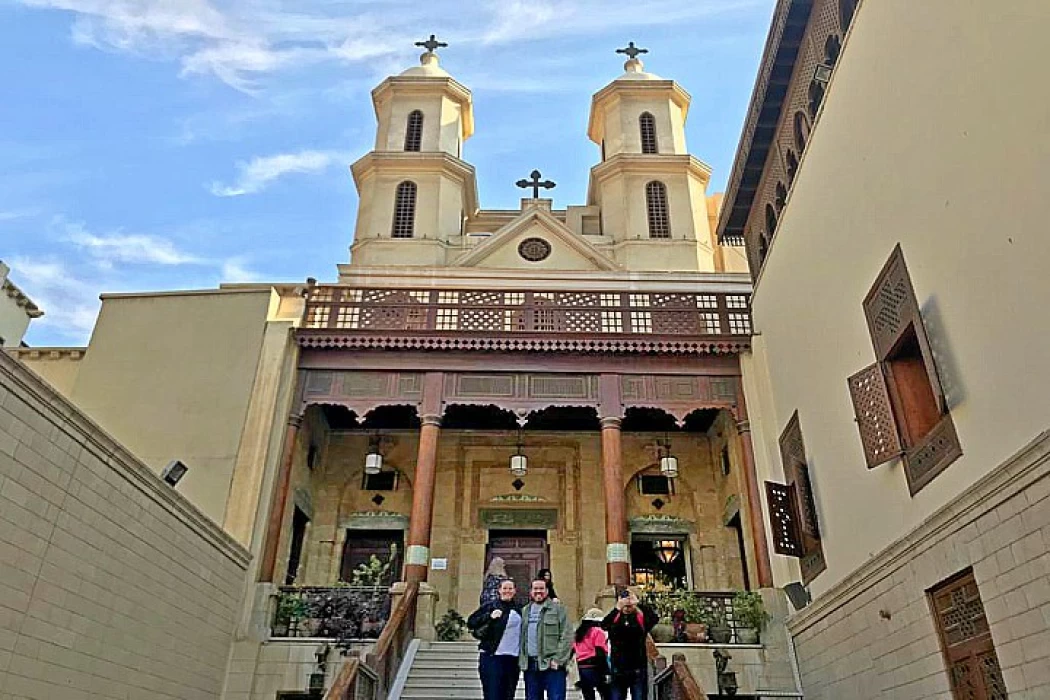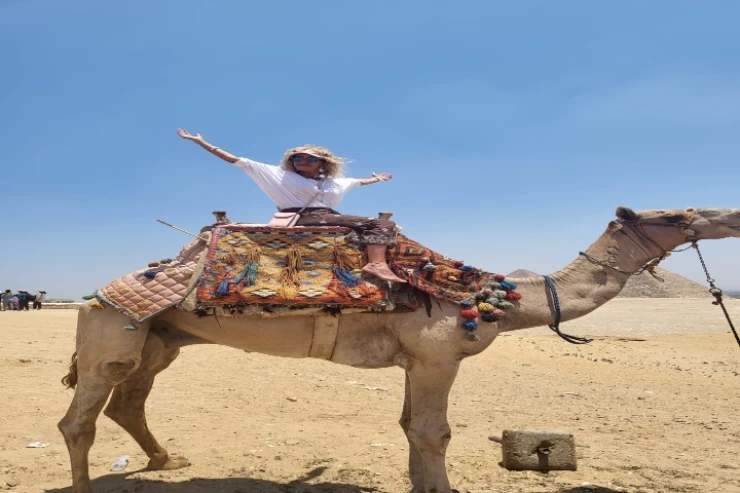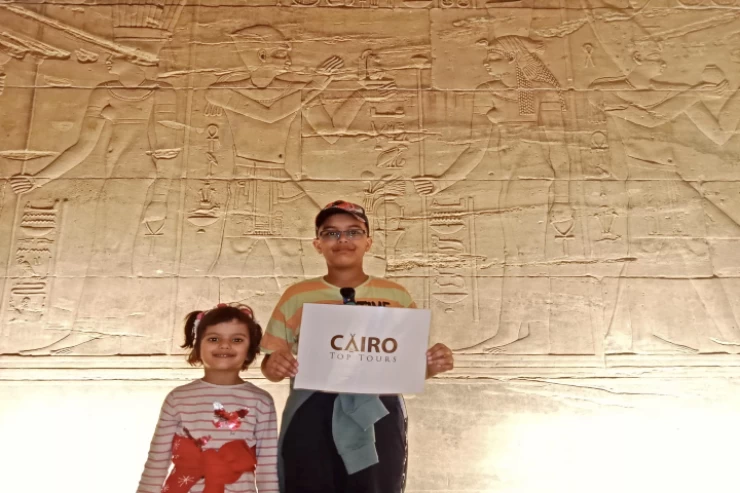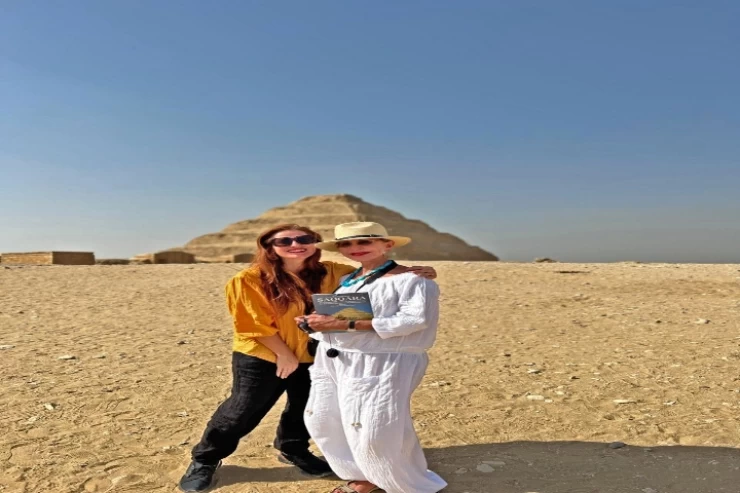
Le Caire copte | Vieux Caire
Le Vieux Caire et copte
La forteresse de Babylone, le musée copte, l'église suspendue, l'église grecque de Saint-Georges et de nombreuses autres églises et sites historiques coptes sont tous situés dans le Caire copte, une section du vieux Caire. Jusqu'au début de l'ère islamique en Egypte, le Caire copte était un véritable bastion du christianisme en Egypte, malgré cela, la plupart des bâtiments et églises actuellement visibles ont été construits après la conquête de l'Egypte par les musulmans. Le Caire copte comprend la forteresse romaine de Babylone, le musée copte, l'église suspendue, l'église grecque de Saint-Georges et des sites historiques, et de nombreuses autres églises coptes. Ce qui en fait l'un des sites historiques les plus riches et des choses à faire au Caire. On croit dans la tradition chrétienne que la Sainte Famille a visité cette région et est restée sur le site de l'église Saints Sergius et Bacchus (Abu Serga), c'est pourquoi les gens pensent que leur visite du Caire est sûre que cette section du Vieux Caire est vue. Le Caire copte était un centre du christianisme en Égypte jusqu'à l'ère islamique, bien que la plupart des bâtiments contemporains des églises du Caire copte aient été construits après la conquête islamique de l'Égypte au 7ème siècle.
Lorsque les Perses ont construit un fort sur le Nil situé au Nord de Memphis. C'est une preuve de compensation dans la région dès le 6ème siècle avant J.-C. Les Perses ont également construit un canal de la mer Rouge au Nil (à Fustat). Le hameau persan s'appelait Babylone, évocateur de l'ancienne ville le long de l'Euphrate, et il gagna de l'importance tandis que la ville voisine de Memphis s'affaiblissait, tout comme Héliopolis. Babylone et ses habitants ont été pour la plupart oubliés tout au long de la période ptolémaïque.
Il est traditionnellement admis que la Sainte Famille a visité la région tout au long de la fuite en Égypte, demandant refuge à Hérode. De plus, il est admis que le christianisme a commencé à se répandre en Égypte lorsque Saint-Marc est arrivé en terre d'Alexandrie, devenant le premier patriarche, bien que la religion soit restée cachée pendant le règne des Romains. Alors que la population locale commençait à s'organiser en vue d'une révolution, les Romains, reconnaissant l'importance de la région stratégique, ont repris la forteresse et l'ont déplacée à proximité sous le nom de forteresse de Babylone. Trajan a rétabli le canal vers la mer Rouge, provoquant un commerce élevé, bien que l'Égypte soit restée un marigot en ce qui concerne les Romains.
Profitez d'une visite complète du Caire copte lorsque vous planifiez des visites en Égypte ou parmi nos variétés de circuits au départ du Caire.
Sous les Romains, Saint-Marc et ses puissants disciples ont pu transformer une division abondante de la population, des croyances athées au christianisme. Alors que les communautés chrétiennes en Égypte se développaient de plus en plus, elles furent contraintes à l'exil par les Romains, sous l'empereur Dioclétien vers 300 après J.-C., et les abus se poursuivirent après l'édit de Milan qui proclama la tolérance religieuse. L'église copte plus tard isolée de l'église des Romains et des Byzantins. Suivant le règne d'Arcadius (395-408), un certain nombre d'églises ont été établies dans le Vieux Caire. Dans les premières années de la domination arabe, les Coptes ont été autorisés à construire plusieurs églises dans l'ancienne forteresse du Vieux Caire.
Au Caire copte, en 1115 ans, la synagogue Ben Ezra a été établie, dans ce qui était auparavant une église copte qui a été construite au 8ème siècle. Les Coptes avaient besoin de le vendre, afin de lever des fonds pour payer les impôts à Ibn Tulun.
Le Caire copte a accueilli le siège du pape copte orthodoxe d'Alexandrie au 11ème siècle après J.-C., qui est historiquement situé à Alexandrie. Alors que les autorités judiciaires se déplaçaient d'Alexandrie au Caire après l'invasion arabe de l'Égypte tout au long du mandat du pape Christodolos, le Caire a affiché la résidence fixe et réelle du pape copte au Caire copte en 1047 à l'église suspendue.
Le musée copte a été créé en 1910 et abrite les exemples les plus importants au monde de l'art copte.
Des églises:
- Église Sainte-Marie (Haret Elroum)
- Église Saint Mercurius
- Église Saints Sergius et Bacchus (Abu Serga)
- L'église suspendue
- Église de la Sainte Vierge (Babylone El-Darag)
- Église Sainte-Barbara
- L'église de Saint Menas
- Couvent et église Saint-Georges (Le Caire)
- Monastère et église de Saint-Georges (grec orthodoxe)
Les merveilles du tourisme en terre égyptienne sont des fruits que Cairo Top Tours vous apporte par l'intermédiaire de ses agents sur le terrain et/ou en ligne.
Si vous êtes curieux de connaître la ville de Gizeh et que vous voulez voir à quoi elle ressemble et ce qui s'y est passé dans le passé, vous trouverez de nombreuses informations et photos sur le site "Voyager dans le désert blanc est-il sûr ?". Il vous aidera à en savoir plus sur Gizeh.
Coptic Cairo is located in the center of the vast metropolis of Egypt. As the names go, Coptic Cairo is the district replete with history and antiquities—more so, stories of this country’s prominence in Christianity. The district popularly referred to as Old Cairo is one of the oldest parts of the city and is one of the best illustrations of the great melting pot that is the country’s history. People come here to appreciate the mixtures of obvious architectures of all religions—Christianity, Judaism, and Islam. This is to explain more what Coptic Cairo has to offer any tourist who wishes to visit Egypt and not just to see the Pyramids.
A Walk Through History: The Origins of Coptic Cairo
Coptic Cairo is the memory of the period when the settlement was referred to as Babylon the Great, the Roman Empire's fortress on the Nile River. As early as the 4th century, this region became a great hub for Christianity and scholarship. The transformation of this area into a religious center is attributed to the advancement of Christianity in Egypt which can be dated back to the coming of St. Mark in Alexandria in about 42 AD. Christianity expanded, leading to the construction of many churches within Egypt, with Coptic Cairo being the first.
Copt is a name that is given to the Christians from Egypt who belong to the Coptic Orthodox Church, whose doctrine is considered to have been founded by the apostle Mark. Coptic Cairo is a time waiting to be unearthed since it harbors many ancient churches, convents, and other buildings vital for the study of the growth of Christianity in Egypt and the area around it.
1. The Hanging Church (Saint Virgin Mary's Coptic Orthodox Church)
The Hanging Church, which gets its name from the position it sits in, on the upside of the Roman gatehouse of Babylon, is one of the most remarkable and magnificent landmarks in Coptic Cairo. Constructed in the third century, the church is one of the ancient churches in Egypt and is very dear to the Coptic community. The interior design of the church is unique, as it has a wooden ceiling that is crafted like Noah’s Ark, the walls are beautifully detailed, and there is an iconostasis. Visitors are treated to 110 icons depicting biblical scenes and Coptic saints, the oldest of which dates to the 8th century.
2. The Church of Sts. Sergius and Bacchus
Another olden-era church targets modern young and old Christians and lots of tourists, as it is said to have been erected in the cave where the Holy Family hid by the time they were headed to Egypt. The Church of St. Sergius and Bacchus has a mystical aura and simple beauty, which makes one feel immersed in the time of early Christians in a very strong way. The crypt where the Holy Family is said to have taken shelter is accessible to visitors, which provides a striking contrast between the ancient stories of Egypt and the Bible.
3. The Ben Ezra Synagogue
The Ben Ezra Synagogue is one of the most ancient Jewish worship centers in Egypt and is living proof that diverse religious communities may peacefully co-exist in the country. Local tradition maintains that the very synagogue is built on the ground where the Pharaoh`s daughter discovered Moses in the bulrushes. Once a Coptic church, it was turned into one in the 9th century and is an exquisite example of architectural design, comprising carved wooden panels, lovely murals on ceilings, and other historic pieces.
4. The Coptic Museum
Coptic Museum is a must-visit place if one feels like exploring more on the history of Coptic Christianity. Established in 1910, it boasts the largest collection of artifacts and artwork belonging to Copts in the world, including decorated books, clothes, and Coptic icons. This museum also opens up the world to many imaginations about the lives of early Egyptians—Christians in particular—their arts, as well as Coptic art that evolved in different climates interacting with other cultures.
5. The Monastery and Church of St. George
St. George's Church is an exceptional place, as it is one of the rare surviving round-shaped churches in the Middle East. The Greek Orthodox Church here was believed to have been erected in the 10th century; however, some sources even suggest that the primary edifice was erected in the sixth century. The monastery and church are dedicated to Saint George, who is one of the most revered and cherished saints in Christianity, and they still serve the local Christians as places of worship. Also, every April, there is a feast devoted to Saint George, which welcomes many pilgrims all around the year.
On its own, Coptic Cairo is more than a place of worship; it is a representation of the multilayered legacy of Egypt. The area is a perfect example where different practices, traditions, and beliefs, including Christianity, Judaism, and Islam, have interacted within a small radius for centuries. A church, a mosque, and a synagogue are often located within close range of each other, which hints at the existence of wonderful stories about these places and the people in them.
Coptic Cairo illustrates well the enduring spirit and flexible nature of the Copts, who have been able to practice their faith and customs even in the face of changes that have rocked Egypt over the years. This is not just a tourist attraction; it is a zone with schools, markets, and even houses, which maintains a character that is dynamic and expanding.
Dress Appropriately: As a lot of the places of interest are of religious significance, it is important that one dress appropriately. This implies that one should wear clothes that cover their shoulders and knees.
Management of Time: Coptic Cairo is an extensive area with lots of things to see, and many of the places close by early evening. Browse around every place for a couple of hours and enjoy the ambiance without the pressure of time in the views.
Photography: One or two of their chapels and the Coptic Museum may not allow the taking of pictures; hence, it is advisable to seek the courtesy of asking before taking any pictures.
Hire a Professional Guide: Every destination has its own story and history, and every traveler ought to understand that, so it’s better to hire professionals. Their service will be needed as they will explain things like the signs, customs, and stories that cannot be seen or heard by ordinary visitors.


















